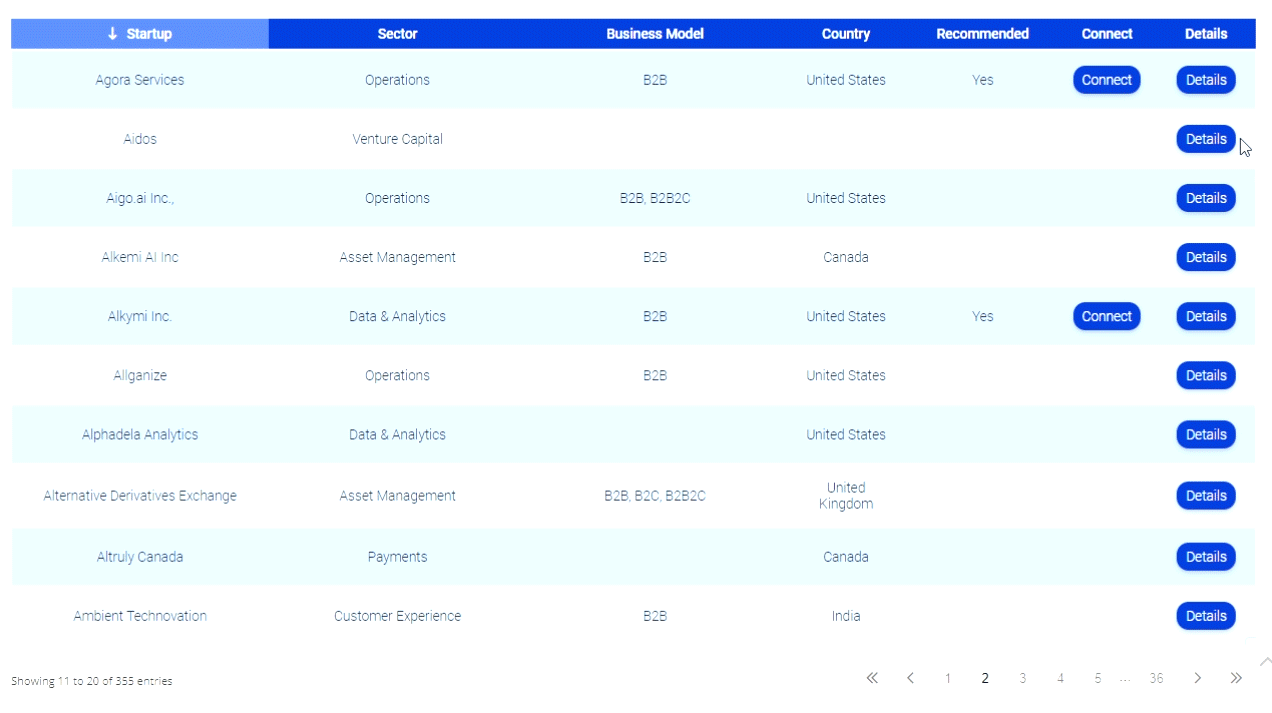Podcast: FedNow or RTP? Maybe both
Listen as the ‘The Buzz’ speaks with Alkami’s Bucher
Financial institutions may consider which payment rails to integrate — whether RTP or FedNow — but the right answer might be both.
“I recommend to financial institutions that if they’re going to just receive, do both rails,” Jeff Bucher, senior product manager for money movement solutions at Alkami Technology, tells Bank Automation News on this episode of “The Buzz” podcast. “If somebody wants to send you money, as a financial institution, you don’t want to say ‘We can’t accept that.’”
However, if an institution is more concerned about its send capabilities, one payment rail will do — for now, he said.
The adoption of FedNow, which launched in July, is growing rapidly. There are more than 220 institutions live on the rail, including $3.9 trillion JPMorgan Chase and $1.8 trillion Wells Fargo, according to the Federal Reserve.
“I think over time, FedNow is going to overtake RTP in terms of financial institutions,” Bucher said.
As FIs decide which payment rail to integrate, Bucher said they must weigh the following:
- Cost;
- Core;
- Servicing; and
- Reconcilement.
The Plano, Texas-based Alkami’s customers include: Ideal Credit Union, Meritrust Credit Union and Vibrant Credit Union. Listen to “the Buzz” as Bucher explains how FIs can best approach integrating FedNow and RTP.
Get ready for the Bank Automation Summit U.S. 2024 in Nashville on March 18-19! Discover the latest advancements in AI and automation in banking. Register now.
Subscribe to The Buzz Podcast on iTunes, Spotify, Google podcasts, or download the episode.
The following is a transcript generated by AI technology that has been lightly edited but still contains errors.
Whitney McDonald 0:03
Hello and welcome to The Buzz a bank automation news podcast. My name is Whitney McDonald and I’m the editor of bank automation News. Today is November 30 2023. Joining me is Jeff Bucher. He heads up product strategy for money movement at Alkami. He previously served as Head of Product Management at Bank of California and has spent time at City National Bank and Union Bank before moving to alchemy. He is here to discuss how FYI select the right payments rail for them when it comes to adopting fed now in RTP. Sure, so Jeff Buch, I work for alchemy, of course, I’m heading a product strategy for money movement, with Alchemy, which includes Faster Payments, ACH wires, handled both business and consumer, we have another business segment also that handles more of the treasury management and things like that. My background is 20 plus years in financial services. So I started out in banking, mostly with the larger financial institutions, Citibank, US Bank, Union Bank, MUFG, Union Bank, and a few others. I spent a lot of time in product management and actually sales, treasury management services. But I also spend a lot of time in the retail segment,
Jeff Bucher 1:24
Great, and then a little bit about alchemy would be great. Yeah. So alchemy, alchemy was founded back in 2009. We have 200 plus financial institutions that we work with who are clients. We have credit unions, and a number of banks that we work with, we are a digital platform. So we offer digital banking services, for money movement, but also several other disciplines within the platform. We offer these platforms and then white label them to our clients so that they can offer them up to their members and their, their users and their clients. That work there. We are very focused on offering a great experience for the user, we focus first on on mobile, and the client experience. And then we work backwards from there in terms of the functionality and what is needed, and make sure that we’re listening to not only our clients feedback, but also their users feedback and do a lot of research there. Great. Well, thank you so much for joining us on the bus today. It’s great to have you, we’re gonna be talking through payments rails and fed now in real time payments adoption. So let’s start here with just kind of, I’ll have you set set the scene a little bit about where we stand today with existing payment rails. What are what are f5 is kind of facing right now with selecting these different payments rails that we have. Yeah, so there’s there’s a ton of buzz going around since fed now just launched this summer. And there, there’s a ton of marketing and a lot of focus by the Fed on providing information around fed now. So there’s a lot of excitement around it, you know, plus the United States is a little bit behind the curve compared to the rest of the world with regard to Faster Payments, and being able to do real time transactions. And so there there is a lot of interest. And I talked to my financial institutions that I work with all the time, about how can we use it? How can we get it? What’s the best way to do that? How do we want to integrate things like that? You know, and what I tell a lot of my financial institution clients is, is think about the use cases, think about what problems are you trying to solve, you know, is Faster Payments important to you is Faster Payments, something you want to do? So we have a lot of conversations in that in that regard. And we try to help them out with giving them direction and strategies as well as, you know, thinking of a short term and long term use cases that their their members and their clients want to want to look at. Let’s take those conversations that you’re having a little bit deeper, how do you really determine what payment solution might be right for a certain financial institution? Could you maybe talk us through what those conversations looked like in a little bit more detail? Yeah, absolutely. So so fed now is kind of the buzzword, right, but fed now and RTP are almost identical in terms of the way they would be used the way the financial institution would interact with them. The functionality of them. The only difference is one is supported by the Clearinghouse RTP and the other one is supported by the Fed, fed now, right RTP has been around for a number of years. So it’s been launched in 2017. Fed now was just launched this summer, as we talked about, and RTP has about 300 Plus financial institutions across the United States. Most of the large ones are already on RTP. In fact, they own the clearing house so they
working with branches working with small business customers, things like that.
They already have access to that fed now is up to about 100. And they just launched this summer. So it’s growing faster than RTP is, but I mentioned, you know, they’re really marketing the heck out of it to try to get some knowledge out there. What I like to talk about, you know, when clients bring up, you know, that they want to get on to fed now, my first question is, is what do you what do you want to do with it? What, what problem are you trying to solve as a financial institution? And a lot of them say, Well, my clients want, you know, to be able to move money faster. Okay, great. You know, so we look at the use cases, the as a use case, I was just talking to a client the other day, as an example, we, we, they said, We want fed now, they said, We want to move money faster, but we don’t know how to do that. How do we connect what what what rails are better to your question? And we talk about, you know, what you want to receive, right, so most financial institutions are looking to receive, and I recommend that they do receive, at least, you know, so that they can get incoming payments from other financial institutions, whether it’s the bigger financial institutions or anybody else that is on RTP are fed now. So that’s, that’s the first thing. So I try to help them. When I was talking to the client the other day, they thought received was a great idea. And they just want to go with receive to start with, they’re a little bit scared about the center part of things. I have other financial institutions that I’ve talked to before. And they really want to get into send, they liked the idea of the account to account extra instant external transfers. So they want to be able to send money as a user be able to send money from their account at, you know, ABC financial institution to XYZ financial institution, they want to be able to move it quickly. They have money at both financial institutions, they have accounts at both places, but they keep most of their money at ABC, they want to be able to move it quickly to the other financial institution. And we are able to set up and help them do that with the partnership with payment providers that we partner with. No.
Whitney McDonald 7:11
Yes, yes. Thank you. Now, maybe we could narrow the scope a little bit and kind of talk through. I mean, yes, you want to address what are you trying to solve for? But there’s other considerations too, when it comes to cost integration client demands? Maybe we can narrow the scope a little bit here and talk through how you have these conversations with your smaller financial institution clients? How do you determine kind of which which rail to take? What solution is right for you, especially when it does come to cost and integration? Which is a huge piece of that puzzle? Yeah,
Jeff Bucher 7:45
there’s a very large, typically a large, upfront cost with regard to both RTP and fed now, the cost between the two rails, there’s, there’s really no no difference there. Between the two. And the way that as I mentioned before, the way the rails function, there’s not a whole lot of difference between RTP and fed. Now, what typically we talk about with the smaller financial institutions is do you want to be on one rail? Do you want to be on both rails? Do you want to receive or do you want to send? So those are the conversations that we have? And if you want to send what is the use case? Is eight a, you know, instant external transfer something you want to do? Or do you want something for businesses, so if you’re if your financial institution and most of your clients are businesses, if you’re a bank with with with a lot of business clients, maybe you want to do a b2b solution, or a B to b2c solution. So business to business or business consumer as an option, so we really look at the use cases. And that’s where the conversation really goes, you know, most of the time, and where we get into the meat of the conversation, is what kind of use cases do you want to look at? So you know, first of all, do you want one rail? Do you want two rails? And then do you want to, you know, what use cases if you’re going to do send, are you going to look at
Whitney McDonald 9:06
now, from a competitive angle? Is it really an option to just pick one payment solution over another? Where do you stand on that? Or how did those discussions go? Yeah,
Jeff Bucher 9:19
I recommend to financial institutions that if they’re going to do just receive, do both, do both rails, because you want to be able to receive money coming into your financial institution, if somebody wants to send send you money as a financial institution, you don’t want to say we can’t accept that, that that just looks really bad. So you know, set up to receive at least for both RTP and for fed now, when it comes to send, maybe you pick one or the other. Right now, as I mentioned, RTP has 300 You know, financial institutions, but fed now is growing quickly. I think over time fed now is gonna overtake RTP in terms of the number of financial institutions, maybe even by next year, and then at that point, and they’re gonna have a lot, a lot deeper reach, in terms of who you could send to. So I always recommend getting on to both rails, if you can, as a financial institution. But you know, if you if you just want to do receive, that’s a definite if you want to do send, maybe just pick one or the other.
Whitney McDonald 10:19
Yeah, being able to receive and taking those deposits, especially as key right now, as banks are fighting for those deposits, right.
Jeff Bucher 10:25
Yeah, absolutely. Now,
Whitney McDonald 10:28
we’ve been doing a lot of coverage of Fed now, we know that there’s a lot of providers that you can pick from, how do you how do you have those conversations? How does a financial institution pick the best provider for them? Whether it’s a smaller institution or a larger institution? Or fed now or maybe even RTP, too, but how are you selecting those providers that are the best fit for your institution?
Jeff Bucher 10:55
Yeah, you know, I think cost is definitely something to consider, I think which cores that provider integrates with, you know, said they’re going to what, whatever you do, you’re going to have to find a provider that integrates with your core, your banking core that you use, because there’s going to have to be real time movement of money. And you can only do that through direct core integration. So if you’re going to choose a payment provider, you got to look at costs, but you also got to look at do they integrate with your core, then there’s other considerations such as, you know, servicing, you know, the interface that they have reconcilement, you know, other things that, you know, are a little bit more nuanced, but it’s something you need to, to think about. But, you know, we went with also a, we partnered with a company called alacrity to as a starter, to get into the RTP in the Fed now networks and partner with our clients, and alacrity. And the reason why we went with alacrity, they were a little bit ahead of the curve. So they had one, they had people who knew what they were talking about with regard to the Faster Payments RTP and fed now, two, they already had the integration to a lot of different cores set up. And three, they, they had their product up and running, and they had been using it already. So they were already on to RTP, a few years back, they’ve already been using it. They know what they’re doing. You know, I think a lot of the other providers are playing catch up. And they haven’t done a lot of transactions, but you want to look at that. Do they have experience with the faster payment transactions? Whether it’s RTP, or fed now, doesn’t doesn’t make that much of a difference, but at least one of those?
Whitney McDonald 12:41
Yeah, cost is definitely huge. But the experience side of it looking into those number of transactions, how has this provider been operating on these rails? That’s a that’s a great piece of advice. Now, one thing I wanted to break down a little bit that you had mentioned in early on in our conversation was this approach to FIS on on fed now as receive only for now you’re going to kind of see the the sending tick up a little bit, can you kind of give us some insight as to that decision to receive only for now move into sign? What’s that going to be looking like, in 2024? Maybe you’ll see more send ticket, maybe you could talk us through that? Yeah,
Jeff Bucher 13:23
so you know, if you’re a smaller financial institution, you have limited resources, right. So you can’t throw a whole team at this and, you know, get it up and running, the implementation is really the heavy lift here. And being able to implement on receive is fairly simple, but being able to implement on receive, and then also do a send, you know, complicates it, you know, by two or three, in terms of the, you know, the implementation, what I’ve heard is once financial institutions are implemented on this, they understand how it’s working, they understand the reconciliation process, and the settlement process, it gets really easy. In fact, RTP and fed now seem to be a lot easier to manage, than, you know, other rails like Ach, of course, ACH NACHA. rulebook is you know, two feet thick, you know, and RTP and fed now were made to be simple, you know, when they created these, these rails, that was one of the defining goals was to make sure that it was a simple process, it would be easy to use, you still need to go through the implementation in any implementation, where you have a core integration is going to be difficult. But once you go through the core integration for receive, you need to, you know, just figure out how it works. And you should be up and running. So you just need to think about as a small, smaller financial institution, what kind of resources can you put towards that implementation? And then, you know, once you get up and running on it, it should be easy to manage. And then you know, think about the second part Are there things, you know, you’re just going to need to assign people who know what they’re doing, you know there, and you’re probably not going to have a whole lot of people, the smaller financial institution. So you just need to think about that.
Whitney McDonald 15:13
Now, I know I mentioned 2024, slightly in the last question, but just looking ahead here, What trends are you watching in the payment space looking into next year? How are consumer expectations shifting and how to financial institutions really keep up with that shift? Yeah,
Jeff Bucher 15:30
I’m definitely looking at the adoption of the number of financial institutions. I mentioned the 300 for RTP. And, you know, fed now just crossed over the 100 100. Mark. I’m looking at that to see how quickly things are being adopted fed now is definitely taking off faster than RTP. Does. I mentioned before, I’m also looking at the use cases. So we’re trying to look at data around what type of use cases are being implemented for the send portion of things with both RTP. And with fed now, eight, a seems to be very popular, and then b2b and b2c seem to be picking up businesses, in my experience, as businesses can be a little bit slow to adopt. They have processes in place as a business, especially if you’re a commercial business, and you’re not going to adopt something right away. Just because it can cause a lot upset to your business to be able to take on another rail. But that’s definitely going to start to pick up I think, in 2024, you know, and I’m gonna keep a close eye on that. Yeah, those are the things that kind of stick out to me.
Whitney McDonald 16:34
You’ve been listening to the buzz, a bank automation news podcast, please follow us on LinkedIn. And as a reminder, you can rate this podcast on your platform of choice. Thank you for your time, and be sure to visit us at Bank automation news.com For more automation news,
Transcribed by https://otter.ai













